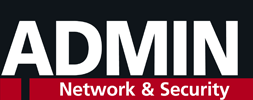Articles
Networking strategies for Linux on Azure
We explore advanced networking strategies tailored for Linux workloads on Azure.
Production-ready mini-Kubernetes installations
Kubernetes can be highly complex, with massive setup routines that are totally over the top for newcomers. If you want to try out Kubernetes or run it in production, you have a number of options, even if you decide not to use the comprehensive packages from established vendors.
Automated health checks
The open source Dradis framework helps you create plans for carrying out team pentests and facilitates the task of standardizing reports from different tools to create summary output.
Denial of service defense
Slowloris can help you harden your web servers against denial-of-service attacks that restrict the availability of web services.
Open source ticket system
OTOBO is a user-friendly and completely free ticket system designed to handle complex service requirements that offers an alternative, easy-to-use support tool with Active Directory integration and single sign-on. We show you how to set up and configure OTOBO and how to connect it to third-party systems such as Entra ID.
Serverless applications with OpenFaaS
Use advanced techniques for automation, optimization, and security to deploy serverless applications with the OpenFaaS framework in a Linux environment.
Remote Access with Tactical RMM
The Tactical RMM open source tool offers a combination of remote monitoring and management, with agents to support Linux, macOS, and Windows.
Passwords, passphrases, and passkeys
Many rules for secure passwords pose major obstacles for unsuspecting users. We investigate how meaningful rigid guidelines are, restate how important passphrases and passkeys are becoming, and offer two recommendations for team-capable password management.
Application-aware batch scheduler
Volcano optimizes high-performance workloads on Kubernetes to avoid deadlocks.
Centrally manage configuration files
The GNU Stow tool in combination with Ansible can help you manage configuration files.
Subscribe to our ADMIN Newsletters
Subscribe to our Linux Newsletters
Find Linux and Open Source Jobs
Most Popular
Support Our Work
ADMIN content is made possible with support from readers like you. Please consider contributing when you've found an article to be beneficial.











